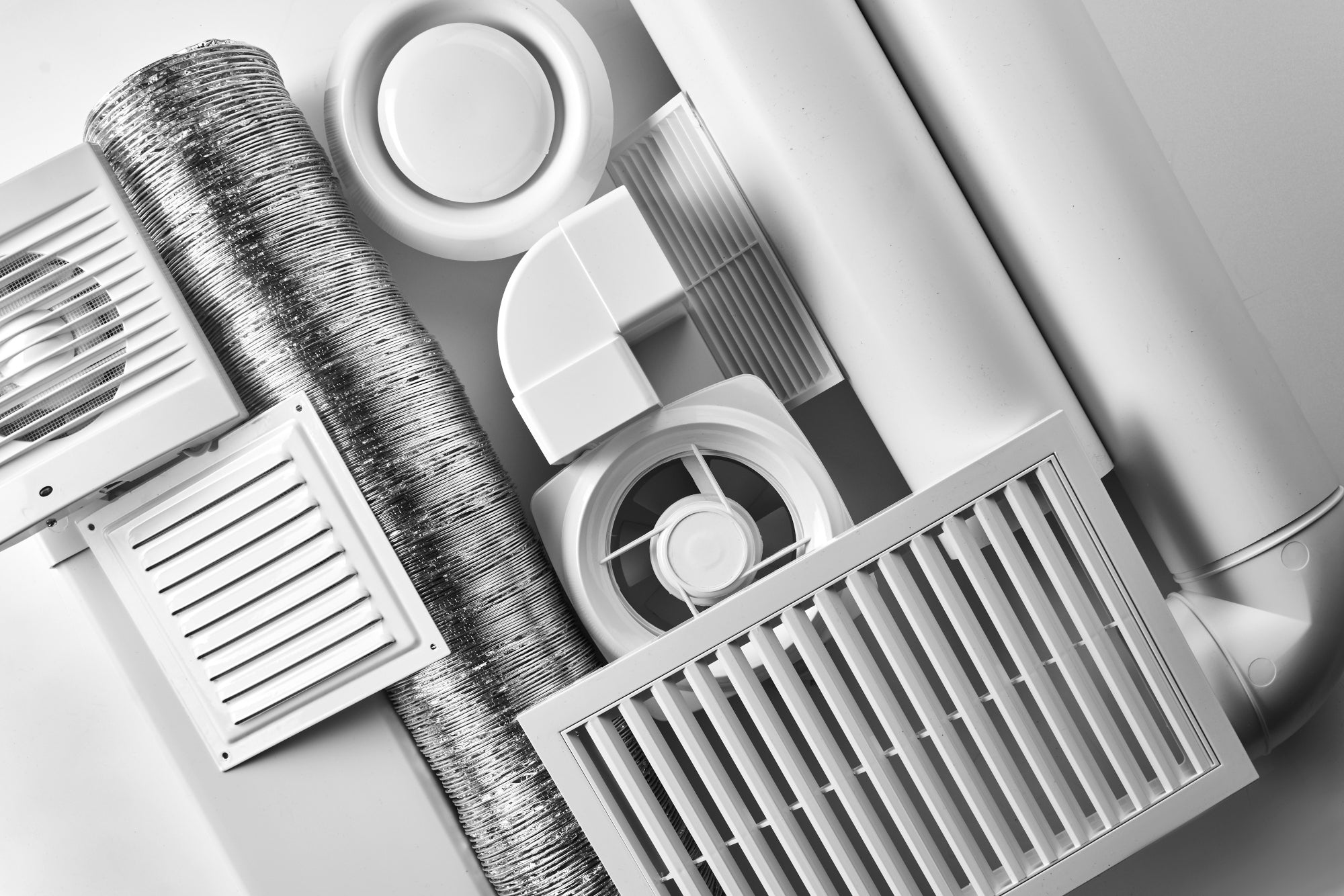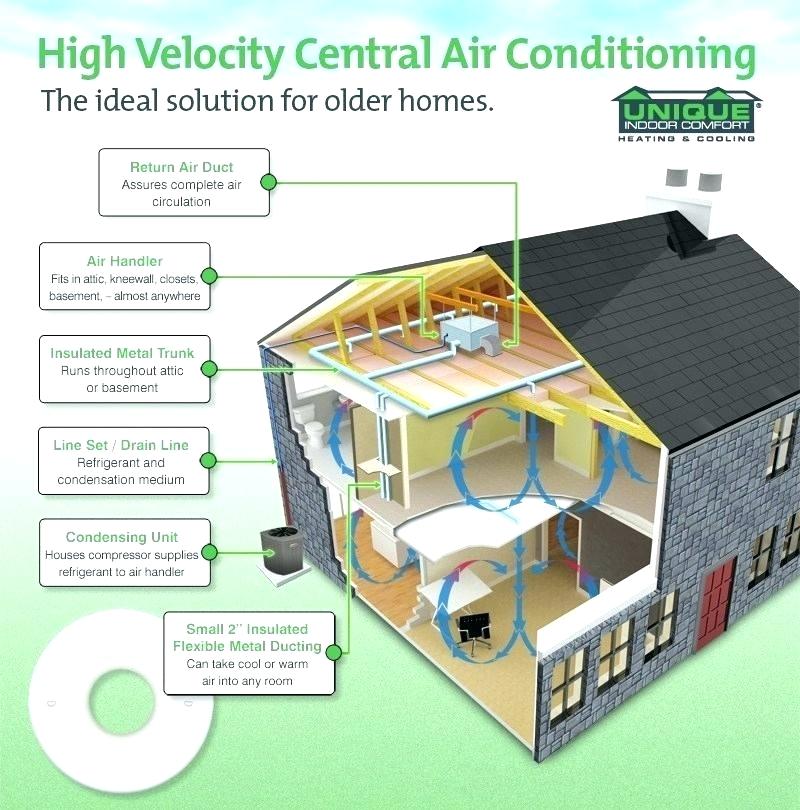New Jersey, 1946. A jet engine pioneer named McCracken builds a heating system called “Jet Heet.” The system consists of small, high velocity insulated ducts. It‘s described in Life Magazine as a “giant octopus that squeezes heat into a room.” The idea bounces around the industry until the mid-1980s, when two manufacturers begin commercially developing systems available to HVAC contractors. In 2004, the Department of Energy titles this type of system SDHV, meaning small duct, high velocity.
Today, this type of system makes up only about one percent of the systems installed by the HVAC industry. But it is poised to become a bigger player in the future because of some of the benefits over “conventional” systems for certain applications.
Most of the tech support calls we receive about SDHV systems here at National Comfort Institute are inquiries about what these strange systems are and how they work. So here’s a quick overview of SDHV systems to get you started.
SDHV at a Glance
As you might imagine, SDHV systems are noted for their small, high velocity ducts. Typical ducts are only 2-in. in diameter and have discharge velocities that usually exceed 1,000 feet per minute. Instead of typical supply registers, they use nozzles that heat or cool rooms with a jet of air. Trunk ducts are also small, to maintain equal pressures and velocities throughout the systems. One design rule of thumb is to use six to seven supply ducts and nozzles per ton.
Since the ducts are so small compared to conventional systems, the fan characteristics differ significantly also. Fans are rated from 1.5-in. total external static pressure up to 6-in. on some models. But even with all that fan capacity, design and precision installation are still critical to ensure adequate airflow and achieve maximum Btu delivery.
Speaking of airflow, the rules for SDHV systems are half of typical. Two hundred cfm per ton in cooling mode is the basic rule of thumb. Using 200 to 250 cfm per ton translates into benefits for the building occupants, including dehumidification capabilities up to 30% greater than standard systems, and coils that produce a temperature drop of up to 30F.
Design Essentials
One key design principle to ensure maximum performance is to allow the air to get a good start out of the fan. Old standards from the American Society of Heating Refrigerating and Air-Conditioning Engineers (ASHRAE) require three to four duct diameters of straight duct at the fan discharge. SDHV systems perform best with four to five diameters of straight duct at the fan discharge before any elbows, takeoffs or transitions in the supply duct. Similar rules apply for heating mode.
Since the ducts are so small, it makes since that more are required. Also, proper placement of the supply nozzles is essential.
Return ducts are sized similar to the low pressure industry rules of thumb, using .05-in. to .08-in. friction loss per 100 ft. Also, fewer return ducts are required (one per pressure zone is adequate) because much of the air mixing needed to heat or cool the building is accomplished by the aspiration caused be the high discharge velocity of the supply ducts.
Because of higher fan static pressure capacities, some SDHV fans can afford many of the high efficiency filters than 0.5-in. fans are unable to manage. Good filters are essential because of the tight coils and high velocities used by these systems. One manufacturer offers carbon filters as an option with their air handlers.
Because most of the consumers that buy these higher-end systems demand high quality, you’ll find clean filtered air to be a top priority. So design your system with high pressure drop filters in mind. This may require you to spec the higher pressure rated fan, but it’s a small increase in cost compared to a standard system.
One key benefit of SDHV systems is the extremely low rate of duct loss. First, the duct construction is small and extremely tight. Far less temperature loss or gain happens, because the surface area of the ducts running through unconditioned areas is small. Also, the speed of the air through the ducting means the air is in the unconditioned space for a short period of time, so it doesn’t absorb much excess heat (or lose much heat to a cold attic).
Equipment
SDHV manufacturers provide the air handler, cooling and heating coils, and the duct systems including connectors, grilles and nozzles. But most of the time contractors use standard condensing units and boilers made by other manufacturers as the plant to produce the needed heating or cooling. Coupled with the newer higher SEER equipment, SDHV maintains comfort with the lower relative humidity and efficiency of the old lower SEER equipment
Heating is most often accomplished with hot water boilers and heat pumps, although heat strips can be used in some areas of the country where heating demand is low. Direct-fired gas heating can not used with these systems because of American Gas Association (AGA) regulations.
Zoning
Arzel Zoning Systems has created a line of zoning products especially made for SDHV systems. The dampers are constructed to stand up to the high velocities, and the control panels are fabricated to meet the particular demands of these systems. NCI has developed several new balancing forms and procedures in Arzel’s SDHV laboratory, which we refer to as “Zoning Playland.”
SDHV Startup and Commissioning
Many of the steps in commissioning a new or existing SDHV system are similar to those used in commissioning a standard system, but there are a few additional steps required to be sure the system is operating at maximum capacity.
Additional testing needed to commission one of these systems include an unusual test method for establishing fan airflow. One system applies a guillotine damper setting at the fan discharge, combined with fan amp draw readings to verify airflow.
Static supply static pressure readings can be tricky to measure because the higher velocity at the fan discharge can throw off your pressure measurement up to 40%. To get a reliable reading, measure supply pressure at least 24-in. downstream from the fan discharge to allow pressures to equalize in the duct.
Measuring airflow from supply nozzles can be a real challenge. New test methods have been and continue to be developed, but the current best bet for an accurate airflow reading is an airflow traverse with a good quality hot wire anemometer in the trunk duct. Since SDHV duct systems have extremely low leakage rate, this test has been found to normally be within 5% of measured airflow at the nozzles.
The Future of SDHV
The key to your success with these systems is your relationship with the manufacturer or your local distributor. Whenever you take on a new product line you’ll have questions and need advice. Some excellent training and tech support are available if you can get connected. It ‘s appropriate to interview your suppliers before deciding which SDHV system to purchase.
These systems currently make up less than1% of residential new construction and 1% of the changeout market. Estimates are that someday this type of system may make up as much as 5% of both markets. Because of effective marketing to architects and engineers, SDHV marketshare in the plan-and-spec sector of the industry is increasing steadily, especially when historic buildings are seeking to maintain their original aesthetics.
There are a growing number of HVAC contractors who recommend SDHV systems in many of their proposals. They offer these systems because it sets them apart from their competition and ensures net profits high above the industry averages.
As with most new products, the first time you install a new type of system your installers will require training. Until they’re familiar with the system, it will present a healthy challenge. But the pattern shows once contractors are successful selling and installing these systems, it often becomes a standard offering to their customers.
Ready for growth and a new adventure? Take a look at small duct, high velocity HVAC systems and learn how you can enter this profitable niche market.
Source: http://contractingbusiness.com/residential-hvac/small-duct-high-velocity-systems-poised-become-bigger-players



